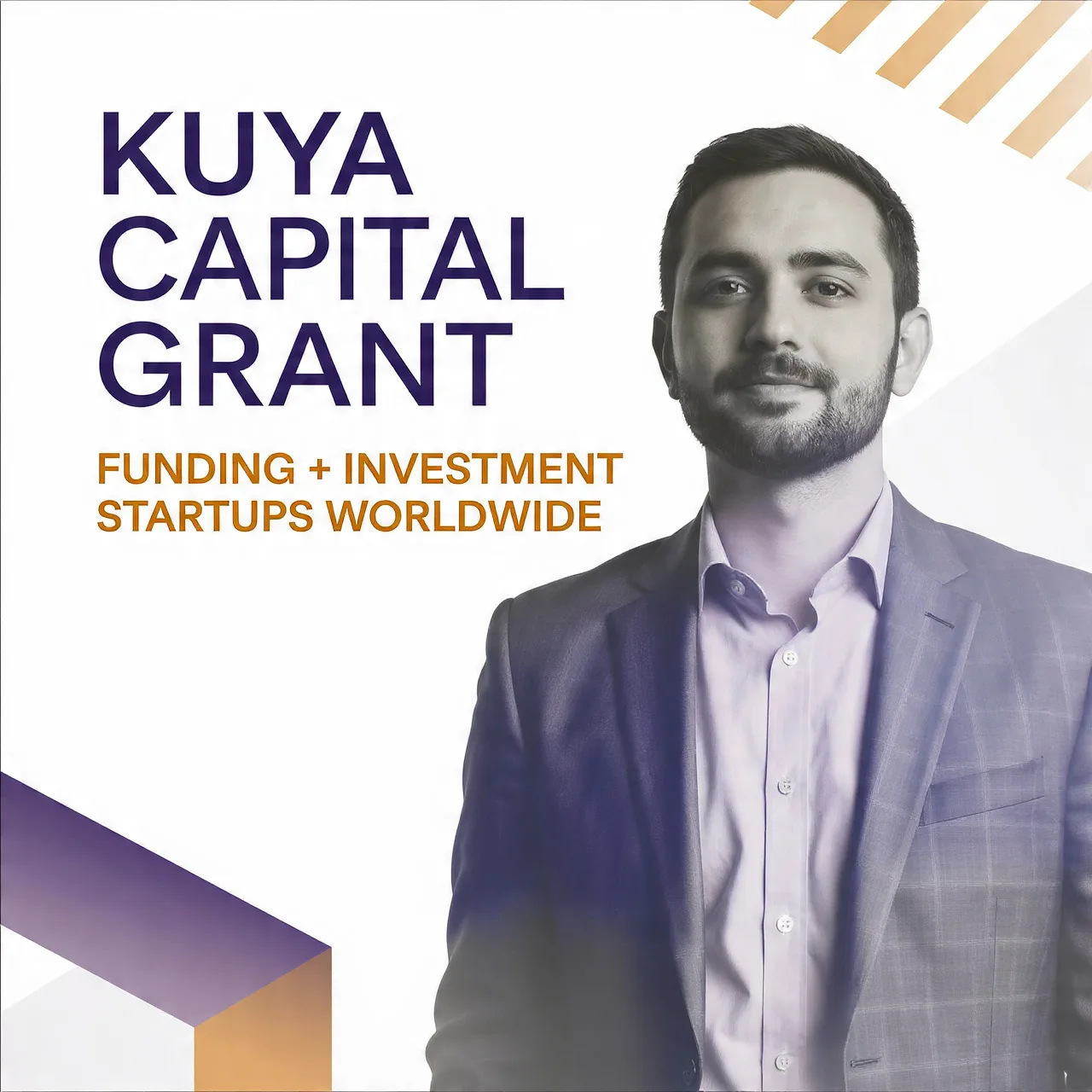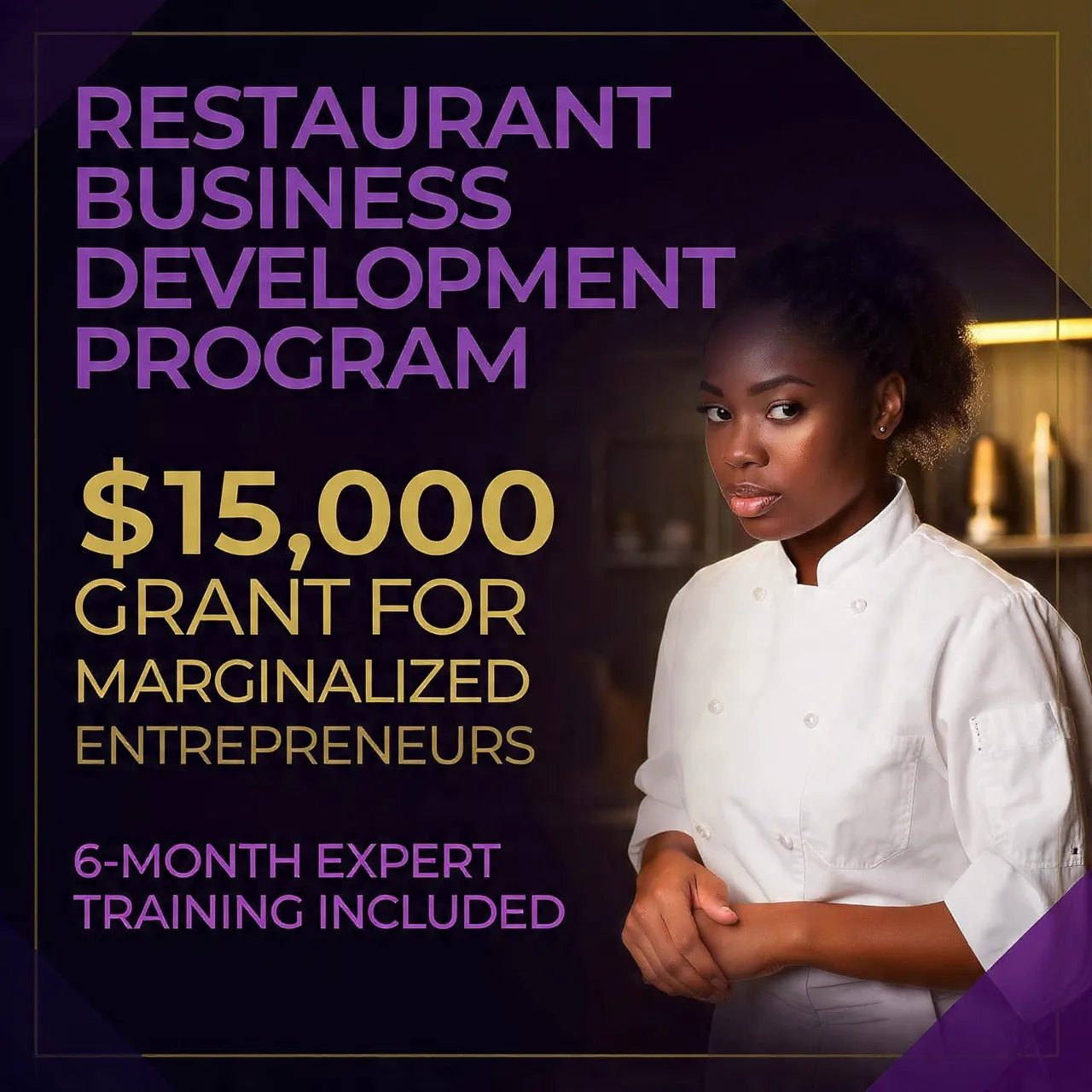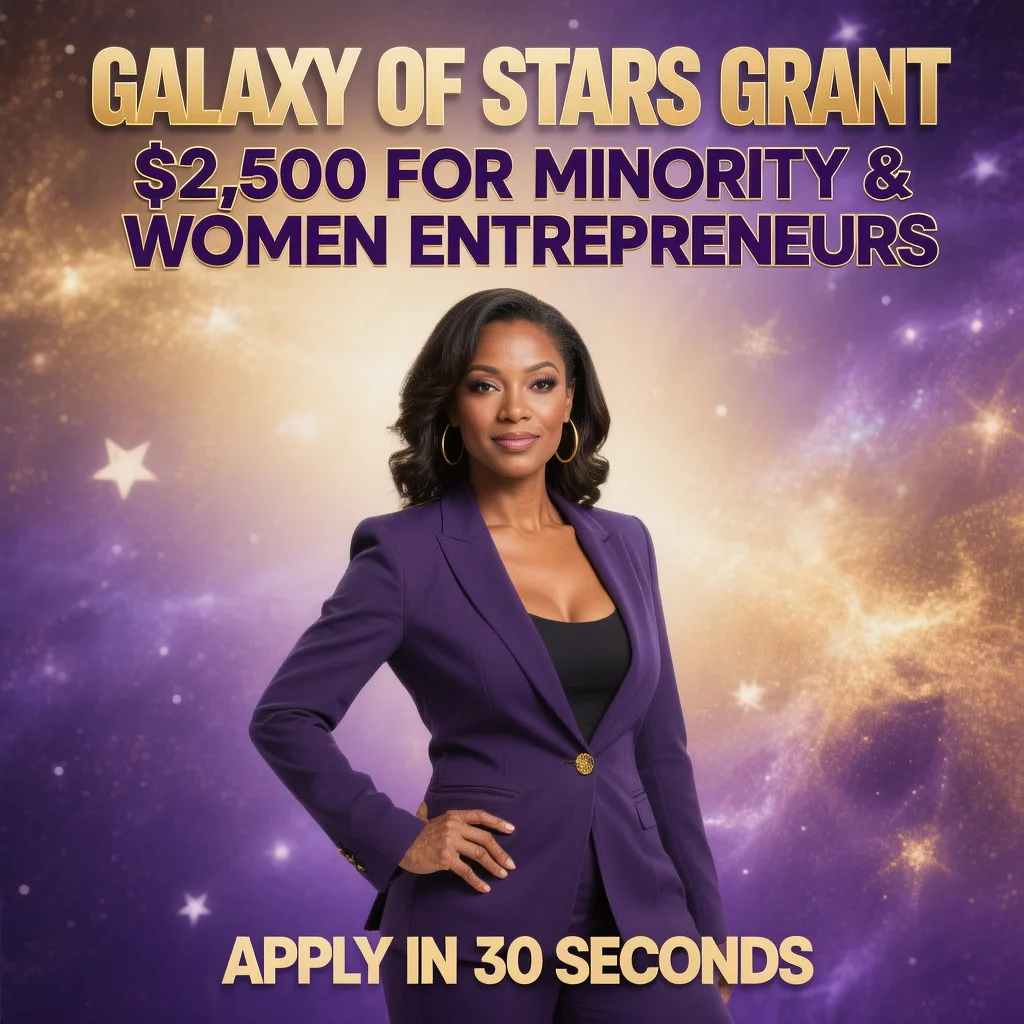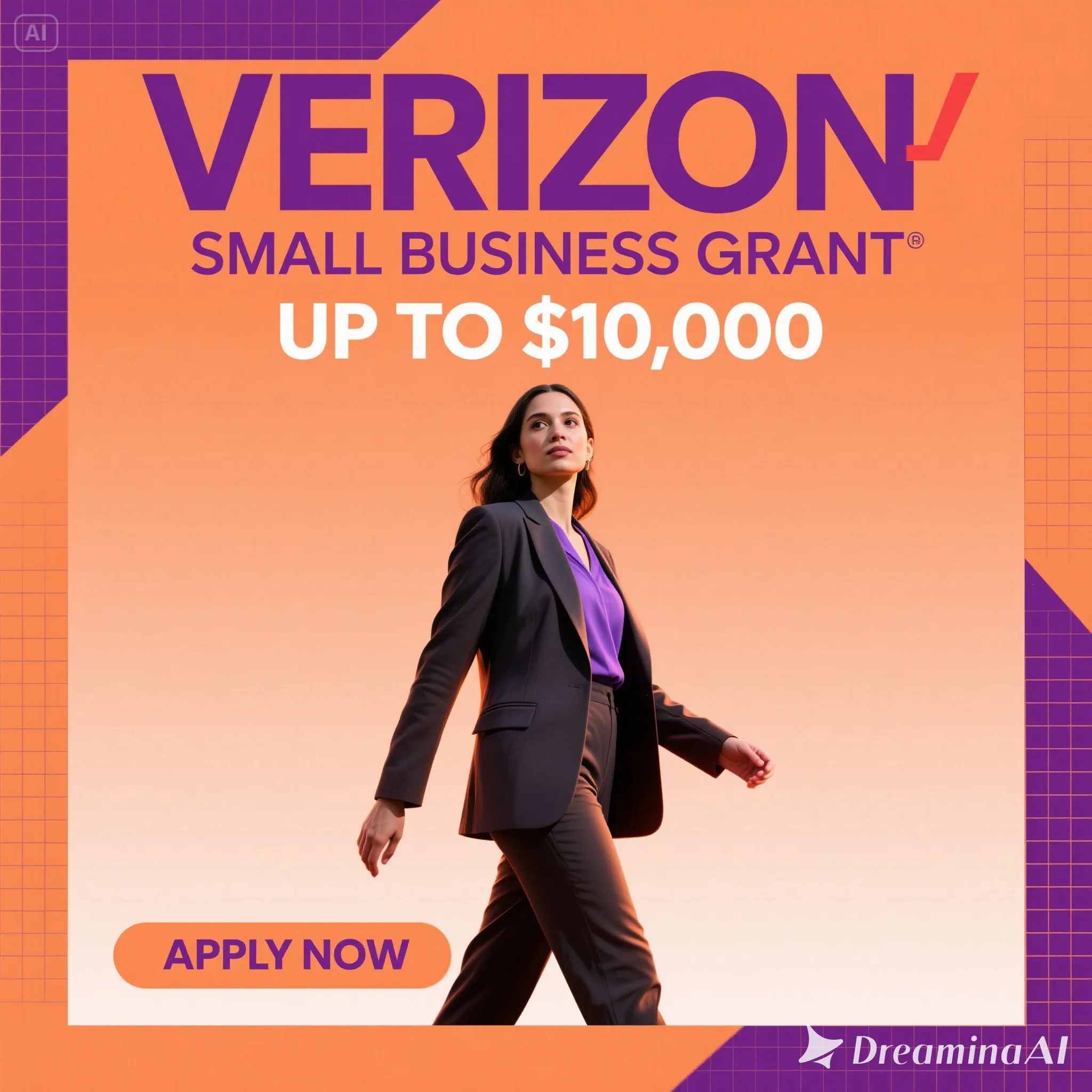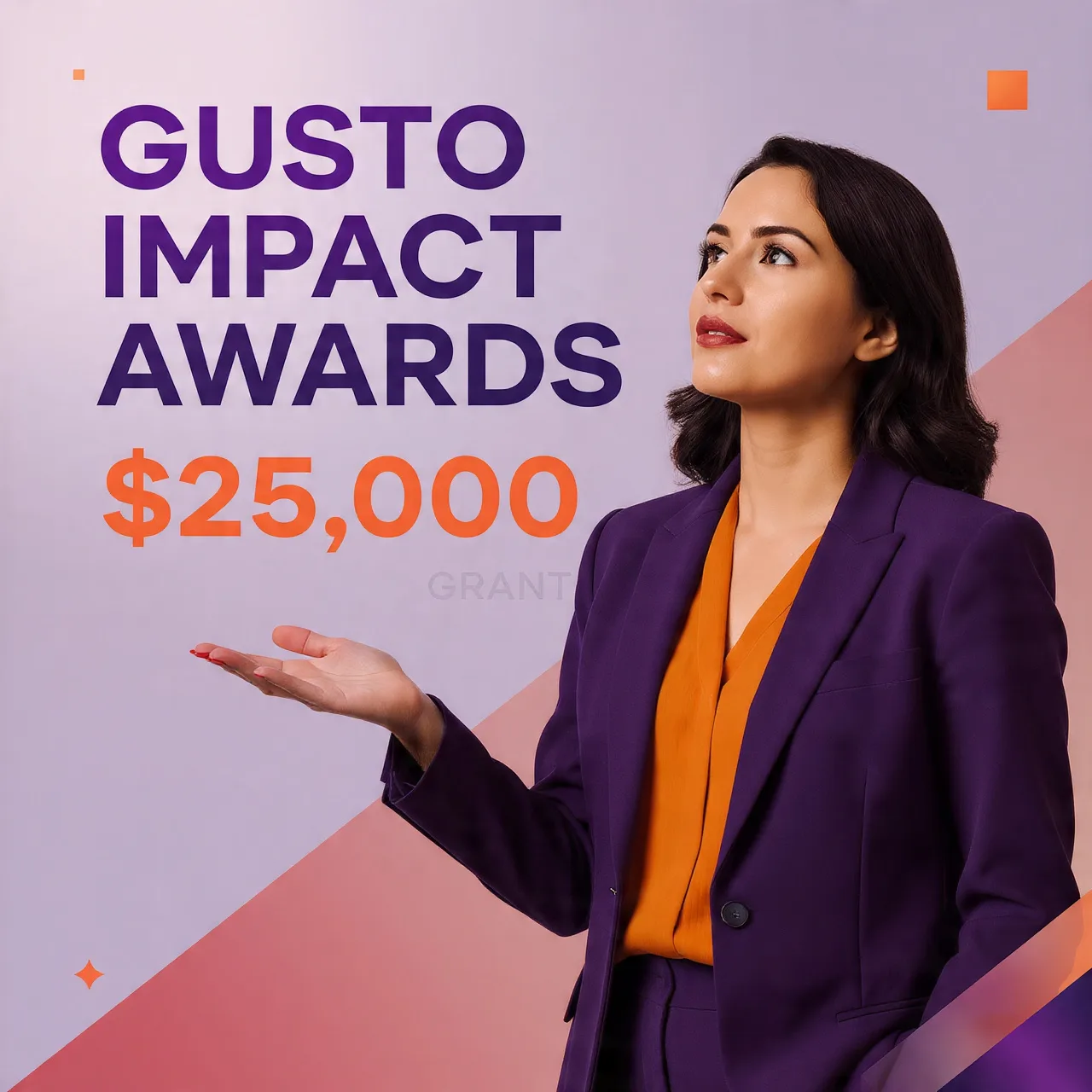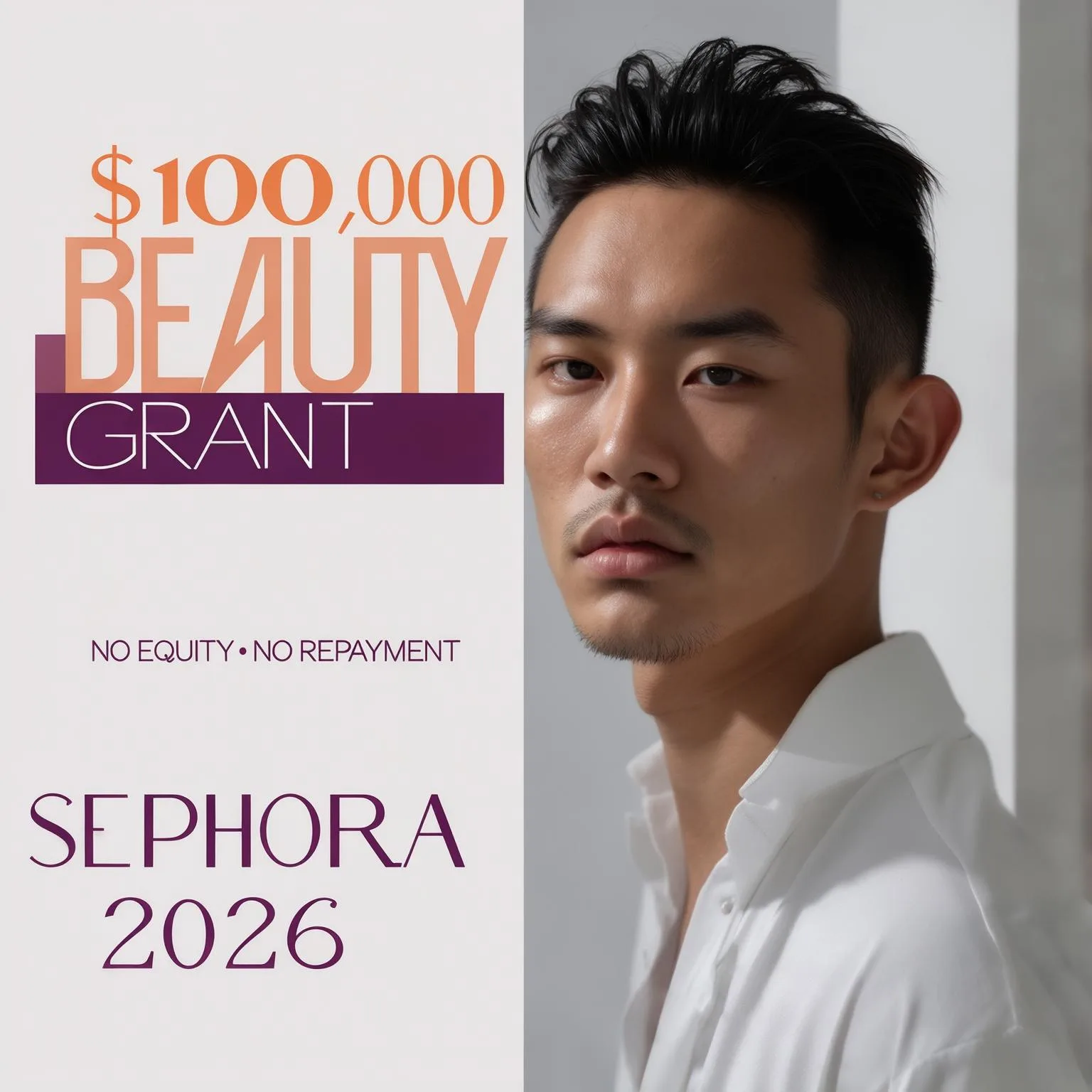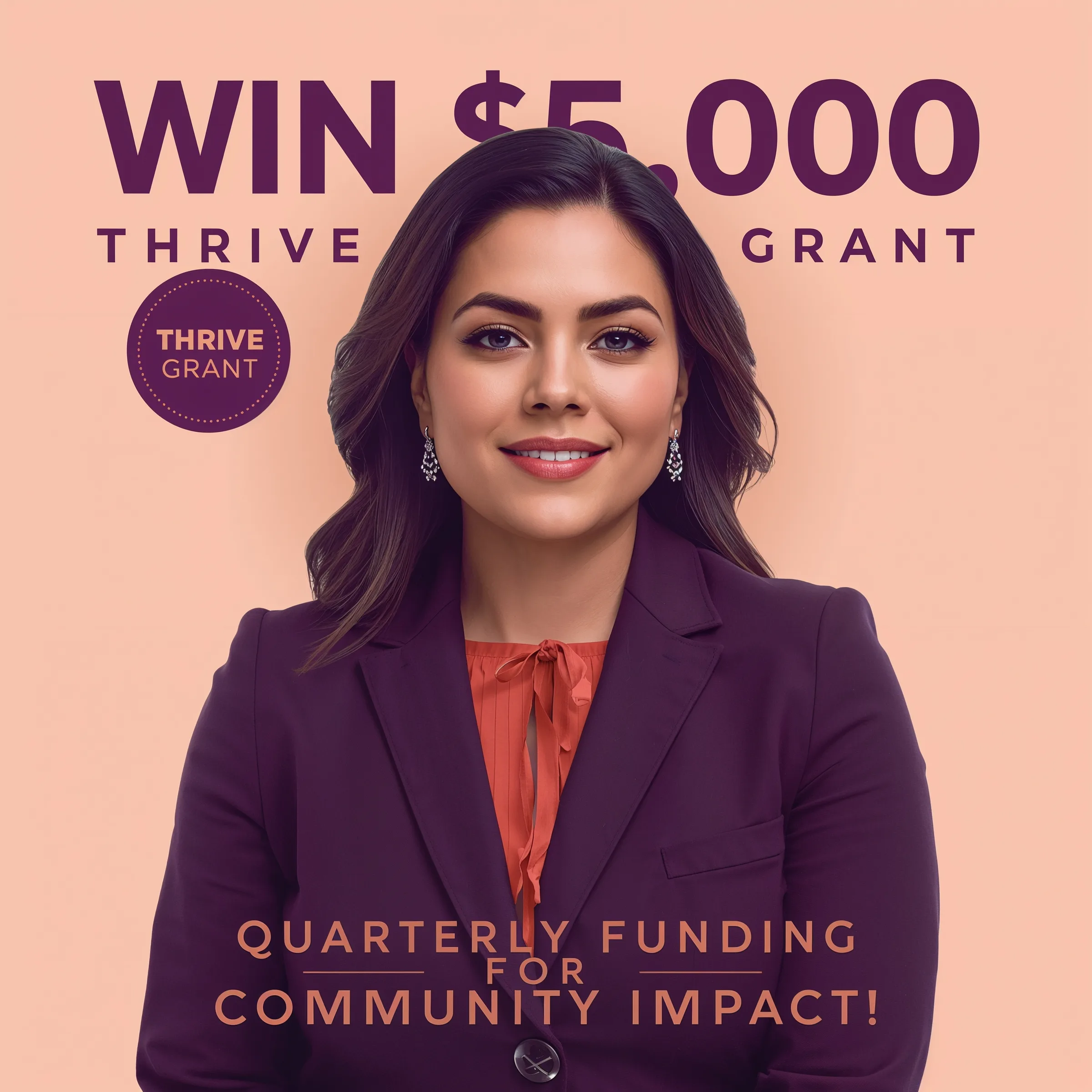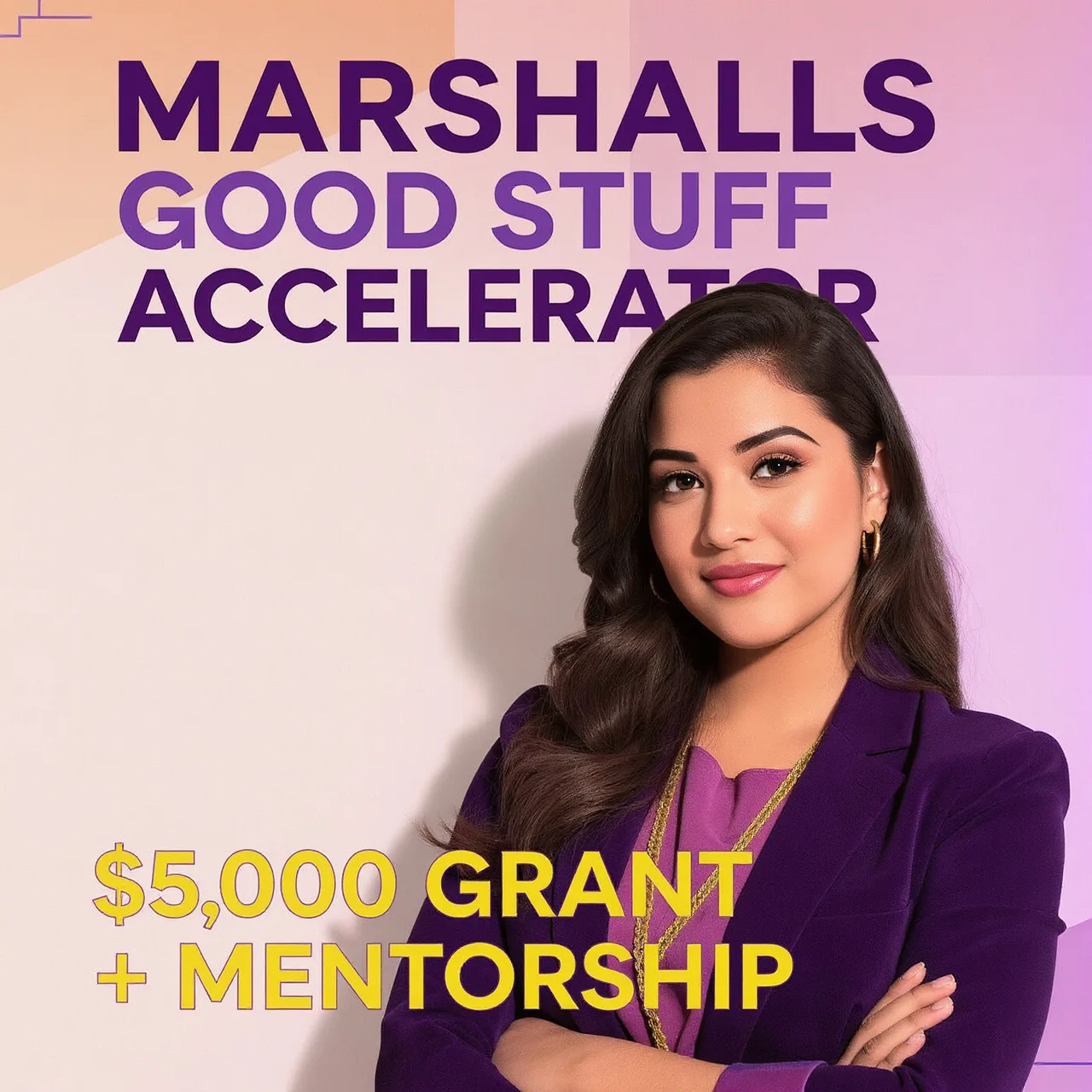
Aurora Tech Award 2026: $85,000 Business Grants for Women Tech Founders
$85,000 in non-equity funding for women-led tech startups globally, with mentorship and investor access.
Grant Overview
Non-Equity Global Funding Supporting Female-Led Technology Startups Fighting the 2.3% VC Gender Gap
The Aurora Tech Award hands female tech founders $85,000 in total prize money split between winners who aren’t just building apps but solving actual problems in markets where traditional investors refuse to look. First place gets $50,000. That’s not congratulations money. That’s hire-your-first-engineer money, build-your-MVP-properly money, stretch-your-runway-another-six-months money. And here’s the part most business grants for women miss completely: you keep 100% ownership. Zero equity taken. No board seats demanded. Just capital, mentorship from people who’ve actually scaled companies across 48 countries, and introductions to investors who write real checks.
Applications close November 12, 2025 , so if you’re reading this in late October with a functional prototype and less than $6 million raised, you need to pay attention. InDrive created this award because they understand systematic exclusion. They started as students in Yakutsk, Siberia, challenging taxi companies that price-gouged residents when temperatures hit minus 45 degrees. Now they’re a billion-dollar company taking the same challenge-injustice approach to venture capital’s women problem.
Title: Aurora Tech Award
Donor: inDrive
Focus: Women entrepreneurs, female founders, technology startups, IT ventures, social impact technology, business grants for women, emerging markets innovation, startup funding, gender equality, venture capital access, fintech, healthtech, edtech, agrotech
Region: Global
Eligibility:
– Must be founded, co-founded, or actively led by a woman in decision-making capacity
– Company age: less than 5 years old (founded 2021 or later for 2026 competition)
– Must have functional prototype demonstrating core product viability
– Total fundraising cannot exceed $6 million (includes all equity rounds, seed funding)
– Pitch deck required in English language
– Technology must be fundamental to business model, not just supporting tool
– For-profit entity (nonprofits not eligible)
Benefits:
– Financial Awards: $50,000 (first place), $20,000 (second place), $15,000 (third place)
– Mentorship Program: Two-month intensive guidance from inDrive C-level executives and industry experts for top 10 finalists (February 23 – March 13, 2026)
– VC Expert Feedback: Detailed application review from venture capital professionals for top 100 quarterfinalists
– Investor Introductions: Warm connections to inDrive’s venture capital partners and strategic investors
– Media Exposure: International press coverage for semifinalists and finalists
– Global Network: Access to 3,000+ female founders community and ongoing resources
– Fintech Track Bonus: Additional $50,000 equity-free funding plus pilot opportunity with inDrive.Money users and ~$20,000 media value promotion for financial technology winners
Deadline: November 12, 2025

Why Most Business Grants for Women Are Theater (And Why Aurora Isn’t)
Let me say something that’ll probably upset some people. Most “support programs” for women entrepreneurs are performance art dressed up as opportunity.
They host networking events. They talk endlessly about empowerment. They create advisory boards. But when you ask about actual capital that helps you hire engineers or negotiate better terms with manufacturers or simply survive another quarter while finding product-market fit? Silence.
Aurora puts $85,000 in non-dilutive funding directly into women founders’ hands . Not loans you repay. Not equity you surrender. Cash you control completely.
Only 2.3% of venture capital funding flows to women-led startups . When women do secure funding, the check is consistently smaller. Study after study shows all-male teams raise three to four times more than female-only teams at similar stages with comparable traction.
This isn’t about merit. Women-led startups deliver better capital efficiency and stronger returns. The Boston Consulting Group found that for every dollar invested, women-led startups generated $0.78 in revenue while men-led startups generated just $0.31. The problem isn’t performance. It’s access.
InDrive gets this because they’ve lived it. They operate in 982 cities across 48 countries , including markets where Western VCs won’t touch. Their entire business model challenges unfair systems through peer-to-peer pricing where drivers and passengers negotiate directly. No algorithmic exploitation. That same philosophy drives Aurora.
Q: Is this actually open to women founders globally, or is it another “global” program that really means US plus Canada?
A: Actually global. The 2025 edition received 2,018 applications from 116 countries . Past winners include founders from Nigeria, Kenya, Botswana, Chile, India, and Pakistan.
Q: Do I need previous venture funding to be competitive?
A: No. Many winners are pre-revenue with strong user traction. You need a functional prototype proving your concept works, but previous funding isn’t required.
Q: What if my co-founder is male?
A: Eligible as long as a woman co-founded the company and holds active leadership with decision-making authority.
The Application Timeline That Actually Matters
Mark these dates because missing one means waiting another year.
Applications opened August 12, 2025 . That window closes November 12, 2025 at 9 AM sharp. No extensions, no exceptions. December 8, 2025, they announce the top 100 quarterfinalists. January 14, 2026 narrows to 30 semifinalists. February 16, 2026 reveals the final 10 .
Here’s what most people miss about timing. Early submissions don’t automatically win, but they get more review time. If technical issues arise or questions need clarification, early applicants have buffer. Late October submissions face a crunch.
Finalists enter a two-month mentorship program from February 23 to March 13, 2026 . Then the award ceremony happens between March 28 and April 1, 2026 (exact date announced by February 1).
Competition’s getting fiercer. The 2025 cycle doubled applications from the previous year . Start your pitch deck now if you haven’t already.
Who Wins This Competition (And What That Tells You About Strategy)
African women founders have won three consecutive years . Let me tell you what that pattern reveals.
Elizabeth Mwangi from Kenya won 2023 with Gwiji for Women , connecting cleaners living in Nairobi’s slums with clients and increasing their daily income from $2 to $10. Folake Owodunni from Nigeria took 2024 with Emergency Response Africa . Solape Akinpelu, also from Nigeria, won 2025 with HerVest , providing financially underserved women with access to savings and credit.
See the thread? These aren’t Silicon Valley clones pitching meal-kit subscriptions. They’re founders solving existential problems in markets traditional VCs systematically ignore. Real businesses addressing actual survival needs.
Technology enables their solutions but doesn’t define them. Gwiji uses mobile tech to create economic opportunities. Emergency Response Africa applies technology to healthcare access. HerVest builds financial inclusion through fintech. The tech matters, but the impact drives decisions.
Second place 2025 went to Nido Contech, developing nature-based construction materials. Third place was FlexiBees, connecting experienced women professionals with flexible work opportunities .
What unites every winner? They’re building from personal experience, not MBA case studies. They understand their markets better than anyone else possibly could because they’ve lived the problems they’re solving.
The Special Fintech Track Most Founders Miss Completely
Here’s something buried in most coverage but worth significant attention if you’re building financial technology.
Aurora runs a separate Fintech Track specifically for startups focused on financial inclusion, particularly those operating or scaling in Peru, Colombia, Mexico, Brazil, Indonesia, or Egypt .
This track offers distinct advantages. Fintech winners receive $50,000 equity-free funding plus guidance from inDrive.Money specialists on product development and growth . The grand Fintech winner gets something genuinely valuable: opportunity to pilot their product with inDrive.Money’s actual users plus a promotion campaign worth approximately $20,000 of media value .
That pilot access matters more than the money. InDrive.Money operates across emerging markets where traditional banking fails entire populations. Getting your fintech solution in front of their user base provides real-world validation that convinces future investors.
If you’re building payment infrastructure, microfinance platforms, lending technology, or financial services for underbanked communities, apply for both the main award and Fintech Track. Two separate shots at winning substantial funding.
What Your Pitch Deck Actually Needs to Win
Your application centers on the pitch deck. Not a business plan. Not financial spreadsheets. A deck that proves you understand your business deeply while remaining accessible to non-technical reviewers.
Start with a problem statement that cuts. Not “women lack access to healthcare” but specific, quantified reality. “In Lagos, 68% of women in low-income neighborhoods cannot reach emergency medical care within 45 minutes, leading to preventable maternal deaths.” One is generic noise. The other demands a solution.
Your solution slide must show your actual product in use. Screenshots of real users interacting with your platform. Photos of your hardware prototype functioning. Not wireframes. Not future-state mockups. Evidence that your technology works now, today, in the real world.
Traction metrics matter enormously. Show user growth, revenue generation, engagement patterns, pilot program results, partnership agreements. If you’re pre-revenue, show letters of intent, waitlist signups, or pilot commitments. Specific numbers beat beautiful graphs every time.
Technology differentiation comes next. What’s actually innovative about your approach? This doesn’t need Nobel Prize-level breakthrough science. WhatsApp wasn’t technologically revolutionary. The implementation was. Show why someone can’t easily replicate what you’re building.
Business model clarity separates winners from wishful thinkers. How do you make money? Who pays you? Why will they keep paying you? Three questions, clear answers. If you have early revenue data, show it. If you don’t, show validated customer interest through concrete evidence.
Your team slide should explain why you’re uniquely positioned to build this specific company. Domain expertise, complementary skills, execution capability. If you’ve built companies before, highlight outcomes. If you haven’t, show relevant experience that reduces execution risk.
Use of funds should be tactical and specific. Not “grow the business” but “hire two engineers to build the Android version, enabling us to reach the 60% of our target market who don’t use iOS, projected to increase our user base by 150% within six months.”
Keep the entire deck under 15 slides. Use visuals over text. Include real customer testimonials if you have them. Prioritize clarity over polish.
Q: Should I include financial projections in my pitch deck?
A: Only if grounded in actual data. Bottom-up analysis based on real unit economics, not top-down fantasy about capturing 1% of a massive market.
Q: What about competitive analysis?
A: Focus on what you do differently, not tearing down competitors. Judges want to understand your differentiation, not your opinions about other companies.
Q: How polished does the design need to be?
A: Clean and clear beats fancy every time. Invest in content quality, not designer fees.
Application Mistakes That Kill Strong Companies
After watching hundreds of founders go through competitive processes for business grants for women, certain patterns emerge in failed applications.
The most common killer is vagueness about the problem you’re solving. “Women face challenges in agriculture” tells me nothing. “Smallholder female farmers in rural Kenya earn 40% less than male counterparts despite equal land quality because they lack direct market access, forcing reliance on exploitative middlemen” tells me everything.
Second killer: solution complexity. If reviewers need three slides to understand what your product does, you’ve already lost. The most powerful innovations explain simply because they solve simple problems elegantly.
Third: weak traction narratives. “We’ve signed up 500 users” is meaningless without context. What percentage are active? How did you acquire them? What’s your retention rate after 30 days? What’s your engagement pattern? Specificity shows you’re measuring what actually matters.
Fourth: ignoring the social impact criterion. Aurora specifically seeks startups that aim to make positive differences in people’s lives . If you can’t articulate measurable improvement your business creates beyond profits, you’re applying for the wrong grant.
Fifth: treating eligibility requirements as suggestions. If your startup is more than 5 years old or has raised over $6 million total funding , don’t waste time applying. Judges immediately disqualify ineligible applications.
Sixth: generic mission statements masquerading as strategy. “Empowering women globally through technology” means nothing. “Increasing daily income for informal sector workers in Nairobi by 400% through direct client connections, eliminating predatory middlemen taking 60% commission” is strategy.
The Money Behind Aurora (And Why It Matters for Your Application)
Understanding who funds Aurora and why influences how you position your application.
InDrive isn’t some foundation checking diversity boxes. They’re a global mobility company operating in 982 cities across 48 countries . They reached billion-dollar valuation by challenging unfair systems through peer-to-peer pricing models.
Their origin story matters. In 2012, in Yakutsk, Siberia, where temperatures routinely hit minus 45 degrees, taxi companies price-gouged stranded residents. A group of students created an alternative where passengers and drivers negotiate fares directly. No algorithmic exploitation. Fair pricing through direct negotiation.
That philosophy drives everything inDrive does, including Aurora. They believe excluding women from tech funding is both morally wrong and economically inefficient. They’re not trying to fix the VC industry. They’re building an alternative.
InDrive’s stated mission is making the world fairer for 1 billion+ people by 2030 by challenging injustice . When you frame your Aurora application, connect your venture explicitly to this larger mission. Show how funding you advances the goal of challenging systematic unfairness in your industry or market.
Position your startup as disrupting unfair dynamics, not just building a better product. That alignment with inDrive’s core philosophy resonates with evaluators.
Beyond the Prize Money: What Winners Actually Get
The cash matters. $50,000 extends runway, enables critical hires, accelerates product development. But what happens after the check clears often matters more.
Finalists receive guidance from inDrive’s executives and industry experts . This isn’t token mentorship where some executive spends 30 minutes giving generic advice. You get paired with operators who’ve scaled businesses across emerging markets where capital is scarce and traditional playbooks don’t work.
Past winners report specific, actionable guidance on product-market fit, fundraising strategy, market expansion, and team building. One 2023 finalist reported 5x business revenue growth within 12 months, directly attributing the increase to connections and strategy from Aurora participation .
Even quarterfinalists (top 100) receive detailed feedback from venture capital experts who reviewed their applications . For women founders outside traditional tech hubs, this is often the first time someone with serious investment experience has evaluated their business critically. That feedback identifies blind spots in pitch, weaknesses in business model, and gaps in go-to-market strategy.
The network effect compounds over time. All participants benefit from joining an expanding community of women in technology, with bi-weekly newsletters providing startup resources and active social media channels . This isn’t a token LinkedIn group. It’s active community where founders share opportunities, make introductions, and support each other’s growth.
Media coverage amplifies reach. Semifinalists and finalists get featured in international tech publications, invited to speak at conferences, introduced to potential customers and partners. That visibility opens doors that pure funding doesn’t.
The Brutal Reality of Tech Funding for Women (And Why Aurora Exists)
Let’s zoom out for necessary context.
Women founders receive 2.3% of all venture capital funding . That number hasn’t improved meaningfully in years. When you factor in race, the disparity becomes grotesque. Black women founders receive 0.27% of VC funding. Latina founders receive 0.4%.
These aren’t rounding errors. They represent systematic exclusion from capital that compounds over time, generation after generation.
The average deal size tells an uglier story. When women-founded companies do secure funding, the check is consistently smaller. All-male founding teams raise on average 3.7 times more than all-female teams. Mixed-gender teams raise 2.1 times more than female-only teams.
Business quality doesn’t explain this gap. Research consistently shows women-led startups outperform male-led companies on key metrics like revenue growth and capital efficiency. The Boston Consulting Group study I mentioned earlier found women-led startups generated more than double the revenue per dollar invested compared to male-led companies.
Additionally, 34% of female founders reported experiencing burnout in recent research , fighting uphill battles not just to build products but to convince investors they’re worth backing.
Aurora exists precisely because traditional funding mechanisms fail women founders systematically. It’s not charity. It’s recognizing that talent distributes equally but opportunity doesn’t, and in tech specifically, that disparity represents massive missed economic value.
Strategic Timing: Where Aurora Fits Your Funding Journey
The $6 million funding cap targets companies past idea stage but before they’ve scaled to easy VC access . This is the valley of death for most startups, particularly those led by women.
Think strategically about where this prize fits your funding journey. If you’re pre-revenue with a working prototype, winning first place could function as your seed funding equivalent. If you’re post-seed with early traction, it could extend your runway by 6-9 months, giving you time to hit milestones that make your Series A round compelling.
Don’t view Aurora as either-or with traditional fundraising. The smartest approach runs parallel tracks. Apply to Aurora while continuing conversations with angel investors and VCs. If you win, you have more negotiating power. If you don’t, you’ve refined your pitch through the application process and potentially gained valuable VC feedback.
The non-equity structure matters enormously for future fundraising. When you approach investors after Aurora, they see grant funding as validation without cap table complications. Your next round becomes cleaner to close because you haven’t diluted yourself prematurely.
Compare this to typical accelerators taking 6-10% equity for similar amounts. Aurora’s structure preserves your entire upside while providing equivalent mentorship and network access.
Regional Considerations That Influence Selection
While competition is global, previous winner patterns show strong representation from emerging markets in Africa, Latin America, Asia, and Eastern Europe . This doesn’t mean founders from developed markets can’t win, but it does suggest judges value founders building solutions where capital is especially scarce and impact especially visible.
If you’re applying from an emerging market, lean into unique challenges and opportunities your geography presents. Don’t apologize for being outside Silicon Valley. The judges aren’t looking for the next Facebook clone. They want founders who understand their markets deeply because they’ve lived the problems.
For founders in developed markets, emphasize how your solution addresses underserved populations or challenges systematic inequalities. The competition’s mission isn’t limited to geographic emerging markets. It’s about supporting women founders who challenge unfairness wherever they find it.
African women have won three consecutive years . Latin American and Asian applicants show strong representation among finalists. Each region offers different strategic advantages. African founders bring momentum. Latin American applicants show strong growth rates. Asian founders demonstrate scale potential.
How to Actually Stand Out in a Field of 2,000+ Applications
With 2,018 applications from 116 countries in 2025 , your submission needs to differentiate immediately.
Write like you’re already successful but need acceleration, not desperate. Not entitled. Confident and ready. This balance is tricky but essential. Winning applications demonstrate confidence without arrogance. They acknowledge challenges while showing solutions. They’re ambitious yet grounded.
Lead with traction, not theory. Judges don’t care about your grand vision if you can’t prove current progress. Show users, revenue, partnerships, pilot results. Evidence of product-market fit reduces perceived risk more than anything else.
Make your social impact measurable and specific. Not “helping women” but “increasing income for 2,000 informal sector workers by 400% while reducing exploitation by predatory middlemen.” Quantify everything. Jobs created, costs reduced, access improved.
Your founder story matters, but connect it directly to your business. Don’t share generic struggles. Explain how your lived experience gives you unique insight or unfair advantage in solving this specific problem. Authenticity resonates when it’s relevant.
Avoid AI-generated language patterns. Judges review hundreds of applications. Generic phrases like “leveraging cutting-edge technology to disrupt the industry” blend into noise. Write how you actually speak. Be specific. Be direct.
The Eligibility Tool: Know Before You Invest Hours
Before spending hours on your application and pitch deck, confirm you actually qualify. Basic requirements seem straightforward, but nuance matters.
“Founded or co-founded and led by a woman” means you must be a founder, not just an early employee, and you must hold meaningful decision-making authority. If you’re one of three co-founders but the other two make all strategic decisions, you probably don’t qualify.
“Functional prototype” means working product demonstrating core functionality. Not designs. Not mockups. Something users can actually interact with, even if incomplete. For software, this means usable application. For hardware, this means physical prototype that performs its intended function.
“Less than $6 million in funding including seed round” counts all equity financing . Add up every investment round where you gave up ownership. Non-dilutive grants don’t count toward this limit, but any time you issued shares to investors, that money counts.
“Less than 5 years old” means incorporation date, not when you started thinking about the idea. If you incorporated in January 2021, you’re eligible for the 2026 award. If you incorporated in December 2020, you’re not.
“Technology-based solution” means technology is fundamental to your business model, not just a supporting tool. If you could deliver the same value with phone calls and spreadsheets, you don’t have a tech startup.
Check Your Eligibility
Our quick assessment tool asks targeted questions about your business stage, funding history, and leadership structure to confirm you meet Aurora’s requirements. This takes two minutes and could save you hours of application work if you’re not quite ready yet. Answer honestly about your company’s age, total funding raised, product development stage, and leadership composition. The tool provides immediate feedback on qualification status and identifies any gaps you might need to address before applying.
Preparing Your Application Right Now
If you’re serious about applying, start by auditing your pitch deck against criteria I’ve outlined. Do you have knife-sharp problem statement? Can you prove your solution works with visual evidence? Have you articulated your business model in three sentences or less? Does your team slide show why you’re uniquely positioned?
Pressure-test your impact narrative. Can you quantify positive change your business creates? Not aspirationally, but based on what you’ve already done or what pilot customers already experienced. Judges want evidence, not promises.
Look critically at your traction. What metrics best demonstrate product-market fit for your specific business model? If you’re a platform, that’s user growth and engagement. If you’re selling to enterprises, that’s pipeline and contract value. If you’re in healthcare, that’s patient outcomes and provider adoption. Focus on the 2-3 metrics that truly matter.
Refine your use of funds. What will you do with the prize money specifically? Not “grow the business” but detailed tactical allocation. “Hire two engineers to build Android version ($30K), expand into three additional markets with localized marketing ($15K), secure ISO certification required for enterprise sales ($5K).” Specificity shows strategic thinking.
Get outside perspective. Find someone who doesn’t know your business and watch them read your pitch deck cold. Where do they get confused? What questions arise? What assumptions do they make? That feedback reveals gaps in your narrative.
After You Submit: What Happens Next
Once you submit, the waiting begins. December 8, 2025, they announce the top 100 quarterfinalists . If you make this cut, you receive VC expert feedback on your application. Use this feedback immediately to strengthen your business, regardless of whether you advance further.
January 14, 2026 narrows to 30 semifinalists . Making semifinalist provides media exposure and networking opportunities. You’re now positioned among elite women tech founders globally. That credibility carries weight in future fundraising conversations.
February 16, 2026 reveals the final 10 . If you reach finalist status, prepare for intensity. The two-month mentorship program from February 23 to March 13 requires real engagement . Block this time. Treat it like the valuable opportunity it is.
Don’t pause your business while waiting. Many applicants submit and then stop building, hoping to win. Winners accelerate. If you reach interviews showing progress since application, you demonstrate execution capability that impresses reviewers far more than perfect pitch decks.
If You Don’t Win: Strategic Value of Participation
Most applicants won’t win. That’s mathematics with 2,000+ applications and three cash prizes. But participating strategically still creates value.
Making top 100 gets you detailed VC feedback. This alone justifies application effort for many founders. Professional investors evaluate your business and tell you specifically what’s weak. That information costs thousands if you hire consultants.
Making top 30 generates media coverage. Tech publications feature semifinalists. Conference organizers invite you to speak. Potential customers and partners notice. That visibility compounds over time in ways difficult to quantify but impossible to ignore.
The application process itself clarifies your thinking. Building a pitch deck that wins competitive grants forces you to articulate strategy more clearly than you otherwise would. Many founders report that preparing their Aurora application helped them refine positioning for subsequent investor conversations.
The network expands regardless of placement. Other applicants become future collaborators, customers, or partners. The Aurora community creates ongoing value beyond prize money.
Professional Support: When It Makes Sense
Building a tech startup is hard enough without also being an expert grant writer. The difference between applications that get dismissed in first round and those making top 100 often comes down to narrative structure, evidence presentation, and understanding what evaluators actually care about.
At Grantaura, we’ve helped over 300 founders secure funding with a 4.9 rating. We know what makes Aurora applications win because we’ve studied patterns, analyzed past winners, and worked directly with founders going through this exact process.
We help translate your technical expertise and vision into applications that resonate with reviewers. We identify gaps in your pitch before you submit, not after you get rejected. Whether you need complete application review, pitch deck refinement, or strategic guidance on positioning your company, we can help.
The investment in getting your application right is minimal compared to potential upside of winning $50,000 plus mentorship and investor access. CLICK HERE to get GRANT PROPOSAL WRITING help that maximizes your Aurora Tech Award chances and positions your startup for funding success across multiple opportunities simultaneously.
15 More Business Grants for Women Tech Founders
Smart founders diversify their funding applications across multiple programs. Aurora represents one high-value opportunity, but other business grants for women offer substantial funding at different stages and focus areas. Here are additional opportunities worth pursuing alongside Aurora.
-
- EmpowHer Grants by Boundless Futures Foundation: Up to $25,000 for female founders aged 22+ running U.S.-based for-profit businesses less than 3 years old with clear social impact. Includes Advisory Circle access providing strategic guidance on business focus, planning, and growth. Perfect for women entrepreneurs building mission-driven companies addressing poverty, hunger, sustainability, or community development challenges.
- Lenovo Small Business AI Grant: $25,000 cash plus $10,000 in AI technology and Microsoft Copilot integration for small businesses ready to embrace artificial intelligence transformation. Available in select U.S. and Canadian cities. Ideal for women-owned tech companies integrating AI into operations, combining financial support with cutting-edge technology solutions.
- Amber Grants by WomensNet: Monthly $10,000 grants plus three annual $25,000 awards for women-led businesses in U.S. and Canada. Straightforward application with monthly cycles means multiple chances to win. One of longest-running women’s business grants, offering opportunity to receive up to $35,000 by winning monthly then annual awards.
- Hey Helen Grant: $5,000 unrestricted cash for U.S. women entrepreneurs generating $25,000 to $1 million annually. Mission-driven for-profit businesses preferred. The specific revenue range makes this less competitive than larger awards while providing meaningful capital for founders at critical inflection point.
- The Big Idea Grant for Women Entrepreneurs: Monthly $1,000 grants plus year-long wealth mindset coaching group access. While smaller than Aurora, the monthly cycle and coaching component add significant value for early-stage founders building business fundamentals.
- Maine Technology Institute Seed Grant: $5,000 to $50,000 for innovative Maine-based tech businesses and entrepreneurs developing groundbreaking products in seven technology sectors. Rolling applications with 1:1 matching funds required. If you’re located in Maine or willing to establish operations there, this offers serious capital with dedicated MTI team support.
- AAUW Career Development Grants: Up to $8,000 for women entering or advancing in high-growth STEM fields where gender gaps persist. While focused on education and training rather than direct business funding, this program provides crucial credentials for founders who need specific technical skills to scale ventures.
- Women Entrepreneurs Grant Category: Browse Grantaura’s comprehensive collection of funding opportunities specifically designed for women-owned businesses across all industries and stages. Updated daily with new opportunities and expired listings removed immediately.
- Caltech Rocket Fund: $25,000 to $100,000 non-equity grants for cleantech entrepreneurs at TRL 5-8, with fast-track funding and connections to California utilities. If your women-led tech startup addresses sustainability or clean energy challenges, this program offers substantial funding plus utility partnerships and accelerator access with strong track record supporting diverse founder teams.
- Technology Grants Category: Explore our complete directory of grants specifically for tech companies, from AI and software to hardware and deep tech innovations. Filter by amount, deadline, and location to find opportunities matching your startup’s exact profile and development stage.
- Fund Her Future Grant: Block Advisors and Hello Alice distribute $100,000 total to six women entrepreneurs, including one $50,000 grand prize winner, plus year of professional business services valued at $30,000. Combines capital with expert bookkeeping, tax planning, and business advisory support crucial for early-stage founders.
- Global Grants and Funding Opportunities: Access international funding opportunities specifically curated for women entrepreneurs and tech founders worldwide. Perfect for founders in emerging markets where local capital is scarce but innovation potential is high.
- Women Founders Network Fast Pitch Competition: Two $25,000 prizes for tech and consumer product tracks in Los Angeles, plus pitch coaching and investor connections. If you’re U.S.-based and can attend in-person event, this comprehensive support package rivals Aurora’s offering with less global competition.
- ZenBusiness $5,000 Small Business Grant: For U.S. businesses that used ZenBusiness formation services within past 3-6 months. If you’re incorporating your startup, using ZenBusiness qualifies you for this straightforward funding opportunity with simple application process.
- Startup Grants Directory: Browse all grants specifically designed for early-stage companies, many prioritizing or exclusively supporting women founders. Updated daily with new opportunities and application deadline tracking to ensure you never miss funding windows.
Finding the right business grants for women requires strategy, timing, and understanding how your specific business aligns with different funders’ priorities. Grantaura maintains the most comprehensive, actively updated database of grants with new opportunities added daily and expired listings removed immediately. Our platform allows filtering by eligibility criteria, focus area, location, and deadline to surface funding perfectly matching your business profile. Stop wasting hours searching multiple websites and let our free database identify the right opportunities for your specific situation. Visit grantaura.com to explore our complete grant directory and strategic resources designed specifically for women tech founders seeking capital to scale.
Terms
- Non-Dilutive Funding: Capital provided without requiring you to surrender ownership stake (equity) in your company. Aurora’s $85,000 prize pool is completely non-dilutive, meaning winners keep 100% ownership while receiving capital to grow. This contrasts sharply with venture capital, where investors receive ownership percentage in exchange for funding, or accelerators taking 6-10% equity for similar amounts.
- Functional Prototype: A working version of your product demonstrating core functionality to real users, even if incomplete or unpolished. For software startups, this means usable application or platform that performs intended functions. For hardware companies, this means physical prototype that actually works. Not mockups, designs, or concept presentations, but something tangible that proves your technology functions as claimed.
- Seed Round: The first significant round of venture capital financing raised by a startup, typically ranging from $500,000 to $3 million. Comes after friends-and-family or angel funding but before Series A. For Aurora Tech Award purposes, your total fundraising including seed must not exceed $6 million to maintain eligibility for competition.
- Pitch Deck: A brief presentation typically 10-15 slides providing overview of your business plan, product, market opportunity, team, and financial projections. Used to quickly communicate your company’s value proposition to potential investors, partners, or grant evaluators. Must tell compelling story while proving you understand business fundamentals and market dynamics.
- Product-Market Fit: The degree to which your product satisfies strong market demand. You’ve achieved product-market fit when customers actively seek out your solution, retention rates stay high, and growth happens through word-of-mouth rather than forced acquisition. This remains a key evaluation criterion for Aurora judges assessing scalability potential.
- Traction: Evidence that your business model works and customers want your product. Measured through user growth, revenue generation, engagement metrics, partnership agreements, or pilot program results. Strong traction proves product-market fit and reduces perceived risk for investors and grant evaluators more than any other single factor.
- Runway: How long your company can operate before running out of money, typically measured in months. Calculated by dividing current cash reserves by monthly burn rate. Winning Aurora’s first place $50,000 prize could extend runway by 6-12 months depending on your burn rate, giving critical time to hit key milestones.
- Burn Rate: The rate at which your company spends cash reserves, typically expressed as monthly burn. A company spending $10,000 per month with $60,000 in the bank has 6-month runway. Understanding your burn rate helps calculate how much funding you need and how long various grant amounts will sustain operations before next funding event.
- Unit Economics: The direct revenues and costs associated with your business model, expressed on per-unit basis. For SaaS business, this means customer acquisition cost versus lifetime value per customer. For marketplace, this means take rate per transaction versus operational cost per transaction. Strong unit economics prove your business model is fundamentally sound and can scale profitably.
- Scalability: Your business’s ability to grow revenue substantially without proportional increases in costs. Technology businesses often demonstrate high scalability because software can serve additional customers with minimal incremental cost. Aurora judges look for businesses with strong scalability potential to ensure prize money creates maximum impact beyond initial grant period.
- Pre-Revenue: A company that has not yet generated sales from customers, though it may have working product and user base. Many early-stage tech startups remain pre-revenue while building their product and establishing market fit. Aurora accepts pre-revenue companies as long as they have functional prototypes and clear, validated paths to monetization.
- Cap Table: Short for “capitalization table,” this document shows who owns what percentage of your company and tracks all equity ownership including founders, employees, and investors. Non-equity grants like Aurora don’t affect your cap table, which keeps future fundraising simpler by avoiding premature dilution complications that concern Series A investors.
- Social Impact: Measurable positive effects your business creates beyond profits, particularly for underserved communities or social challenges. Aurora specifically values startups that address inequality, expand access to essential services, or create economic opportunities for marginalized groups. Impact must be demonstrated through quantifiable data, not just claimed in mission statements or marketing materials.
- Emerging Markets: Countries or regions with developing economies experiencing rapid growth and industrialization. Typically includes most of Africa, Latin America, parts of Asia, and Eastern Europe where traditional venture capital is scarce but innovation potential is high. Aurora has consistently recognized strong work from founders building solutions in emerging markets where capital scarcity is most acute.
- Tech-Enabled Business: A company where technology is fundamental to the business model and value proposition, not just a supporting tool. Your product or service should be difficult or impossible to replicate without the technology component. Examples include mobile platforms, software-as-a-service, hardware devices, and digital marketplaces where technology creates core user experience and competitive advantage.
- Female Founder: A woman who established or co-established a company and maintains active leadership in business direction and strategy. For Aurora purposes, you don’t need to be sole founder, but you must be a founder with co-founder title (not just early employee) and hold meaningful decision-making authority over company’s trajectory and strategic decisions.
- Venture Capital: Investment firms that provide funding to startups and early-stage companies with high growth potential in exchange for equity ownership. VCs typically invest larger amounts than angel investors and take board seats to guide company strategy. Women founders historically receive less than 3% of total VC funding, which is precisely why programs like Aurora exist to address systematic funding gap.
- Letters of Intent: Non-binding documents where potential customers express serious interest in purchasing your product once available. LOIs provide traction evidence for pre-revenue companies, showing market demand exists even though sales haven’t closed yet. Strong LOIs in your Aurora application significantly strengthen positioning when you can’t yet show actual revenue numbers.
- Pilot Program: Small-scale implementation of your product with initial customers to test feasibility and gather feedback before full launch. Successful pilots demonstrate your solution works in real-world conditions and provide case studies for marketing. Many Aurora applicants use pilot results as their primary traction evidence when revenue hasn’t yet scaled substantially.
- Go-to-Market Strategy: Your comprehensive plan for launching product and acquiring customers. Includes target customer segments, pricing strategy, distribution channels, marketing tactics, and sales approach. Aurora evaluators want to see you’ve thought through how you’ll reach customers efficiently and scale systematically, not just built great technology hoping customers magically appear.
- Mentorship Program: Structured guidance provided by experienced entrepreneurs, investors, or industry experts to help early-stage founders avoid common mistakes and accelerate growth. Aurora’s mentorship for finalists includes two months of intensive sessions with inDrive executives and operates more like advisory board access than casual networking coffee chats most programs offer.
- Quarterfinalist: Applicants who make top 100 of Aurora’s competition, announced in December. Quarterfinalists receive detailed feedback from VC experts on their applications, which alone provides significant value for refining business positioning and future fundraising efforts even if they don’t advance to later rounds.
- Market Validation: Evidence demonstrating demand for what you’re building and willingness of customers to pay for it. Comes through customer interviews, surveys, pre-orders, early sales, or user growth patterns. Strong market validation reduces perceived risk and proves you’re solving real problem people care about enough to take action and commit resources.
- Equity-Free Funding: Grants and awards that don’t require giving up ownership in your company. Aurora’s prizes are completely equity-free, preserving founder ownership for future fundraising rounds. This matters enormously because every percentage point of equity you give away early reduces your ownership of the value you create as company scales over time.
- Financial Inclusion: The effort to make financial products and services accessible and affordable to all individuals and businesses, particularly underbanked populations. Aurora’s Fintech Track specifically targets startups providing equitable loans or services to communities excluded from traditional banking systems, especially in emerging markets where financial access remains limited.
Author
I’m Imran Ahmad, and I founded Grantaura after watching too many brilliant founders, particularly women and underrepresented entrepreneurs building technology solutions, get systematically excluded from funding conversations they absolutely deserved to be in. The gap between who gets capital and who creates value never made logical sense to me. The data overwhelmingly shows women-led startups deliver higher returns and demonstrate better capital efficiency, yet they receive a tiny fraction of available funding. That disconnect drove me to build a platform making grant funding accessible to everyone who needs it, completely free of charge. Since 2021, I’ve worked with over 300 founders to secure funding with a 4.9 overall rating, and the Aurora Tech Award represents exactly the kind of opportunity I want every woman tech founder globally to know exists and feel empowered to pursue. This isn’t token gesture or corporate checkbox exercise. This is $85,000 in real money plus mentorship from operators who’ve actually scaled companies plus access to networks that can genuinely transform your trajectory. Through my consultation services at Grantaura, I help founders translate their technical expertise and vision into applications that win by understanding what evaluators actually look for, having studied patterns across hundreds of successful applications and worked directly with founders going through competitive processes exactly like Aurora. If you’re building something meaningful and need funding to scale it properly, I’m here to help you position your company for success across multiple grant opportunities simultaneously. Visit grantaura.com/consultation to discuss your specific funding strategy and how we can maximize your chances of securing the capital your startup deserves.
Who Can Apply?
How to apply for this grant?
We are your trusted grant application partners. You can navigate the entire grant application process with our expert guidance through this simple 5-step process.
Step 1: Application Form
Fill out the "Apply for this grant" form with your information and grant requirements.
Step 2: Eligibility Assessment
Our grant experts will assess your eligibility and notify you via email.
Step 3: Expert Consultation
A dedicated grant expert will be assigned to discuss next steps for your application.
Step 4: Application Submission
Our expert will help you complete and submit your application with all required materials.
Step 5: Final Decision
The grant committee will make their decision and notify successful applicants.





